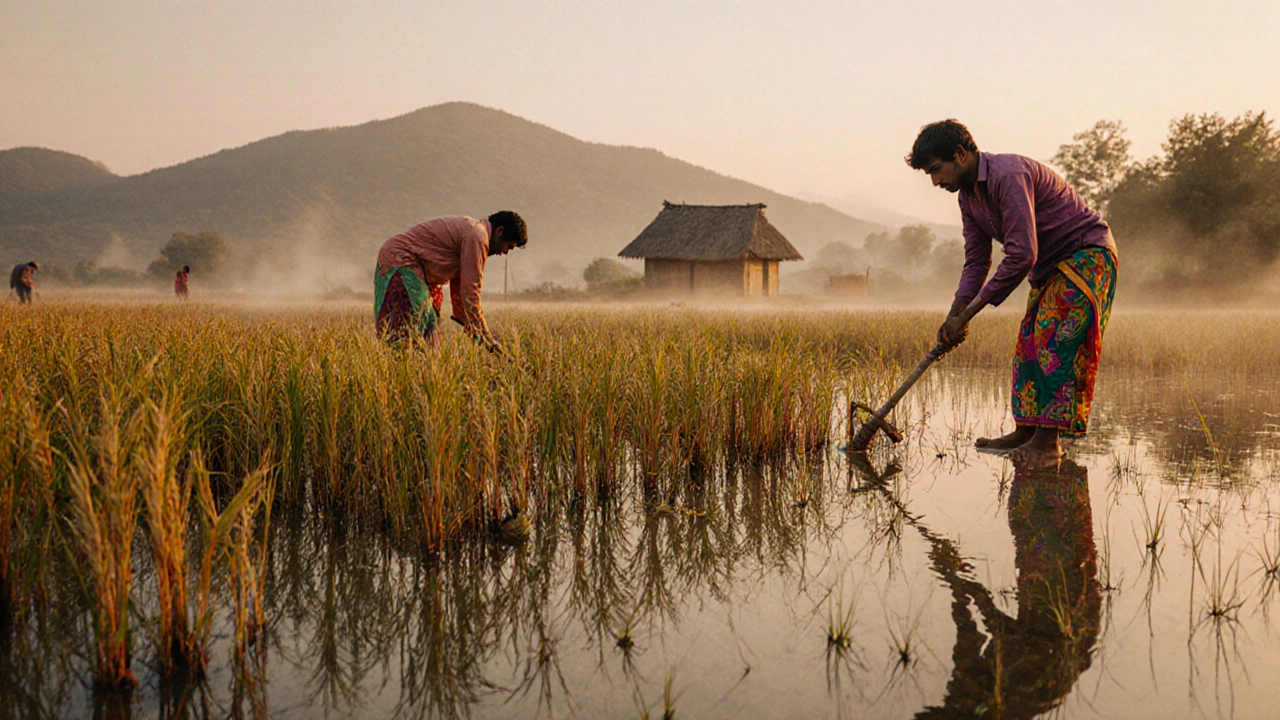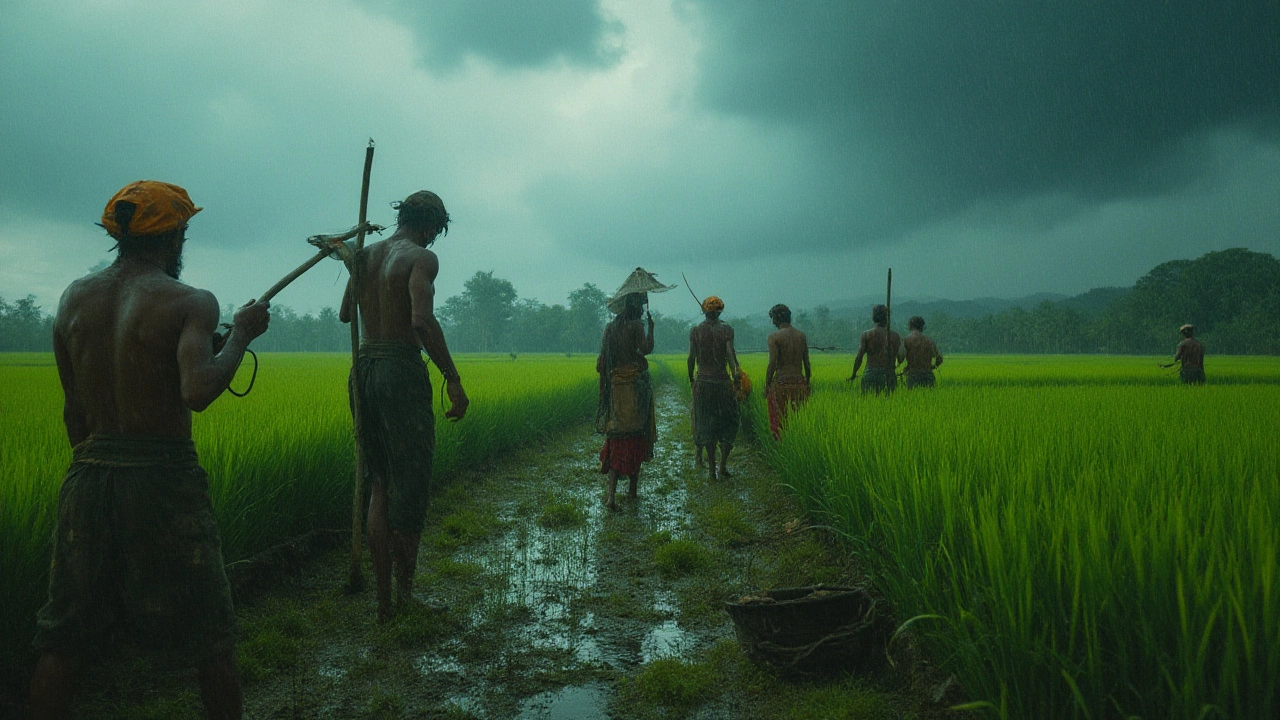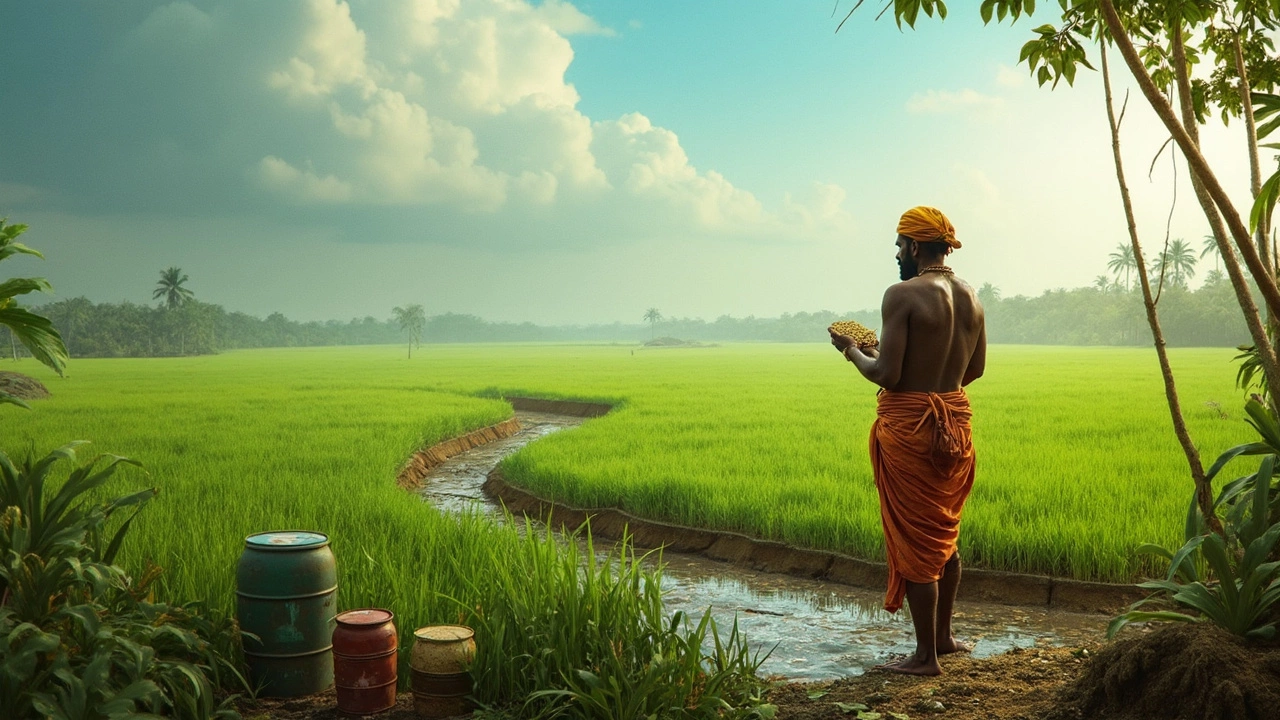Rice doesn't come back every year-it's an annual crop that must be replanted each season. Learn why rice can't regrow, how farmers manage yearly planting, and what perennial rice research means for the future.
Rice Farming in India: How to Grow, Manage, and Succeed
When you think of rice farming, the dominant crop system that feeds over 65% of India’s population and covers more than 40 million hectares of land. Also known as paddy farming, it’s not just about planting seeds—it’s about timing, water, and working with the rhythm of monsoons and dry spells. In India, rice isn’t just food. It’s culture, income, and survival rolled into one. From the flooded fields of West Bengal to the terraced paddies of Uttarakhand, how rice is grown changes with the land—but the core needs stay the same: the right soil, the right water, and the right timing.
Success in rice soil preparation, the process of plowing, leveling, and enriching land to hold water and nurture young seedlings makes or breaks a harvest. Many farmers skip proper land prep, then wonder why their yield drops. Good soil for rice needs to hold water without turning to mud. It should drain slowly, hold nutrients, and stay workable after flooding. Adding compost or green manure before planting can boost yield by up to 20%, especially in heavy clay soils common across Uttar Pradesh and Bihar.
rice yield, the amount of grain produced per hectare, often measured in quintals depends on more than just seed quality. It’s tied to water management, pest control, and even the variety chosen. Traditional varieties like Basmati need longer growing seasons and less water, while high-yield hybrids like IR-8 can produce two crops a year but demand more fertilizer and careful irrigation. In places like Punjab and Haryana, where groundwater is dropping fast, farmers are switching to systems like SRI—System of Rice Intensification—which uses less water and fewer seeds but more labor and attention.
Water isn’t just a resource in rice farming—it’s the whole game. Too little, and the plants dry up. Too much, and roots rot. In coastal Odisha and Assam, where floods are common, farmers plant deep-water varieties that grow taller as water rises. In drier states like Maharashtra, they use laser-leveling and drip systems to cut waste. The best rice farmers don’t just follow calendars—they watch the sky, feel the soil, and adjust daily.
You’ll find tips here on how to fix common problems: why your seedlings turn yellow, how to stop pests without chemicals, when to apply fertilizer, and how to save money on inputs. Some posts cover what to do after harvest—how to dry rice properly so it doesn’t mold, or how to store it for months without bugs. Others show how small-scale farmers are using organic methods to cut costs and build soil health over time. You’ll see real examples from farmers who’ve turned poor land into productive fields, and others who’ve learned the hard way what not to do.
This isn’t about theory. It’s about what works on the ground in India—where the sun is hot, the rains are heavy, and every season matters. Whether you’re growing rice on five acres or a backyard plot, the same rules apply: start with good soil, manage water like gold, and pay attention to every detail. The harvest you get depends on what you do before the first seed goes in.
Uncover the real risks of the rice business, from unpredictable weather to shifting market prices, and learn practical tips to protect your rice farming investment.
Rice is a staple food for billions, but it comes with some hidden problems. From environmental impacts to health concerns, growing and eating rice isn't always as simple as it seems. This article breaks down the main drawbacks of rice and gives you tips to deal with them. You'll learn about water usage, chemical exposure, nutritional gaps, and more. If you grow rice or eat it often, you’ll want to know what’s going on behind the scenes.


